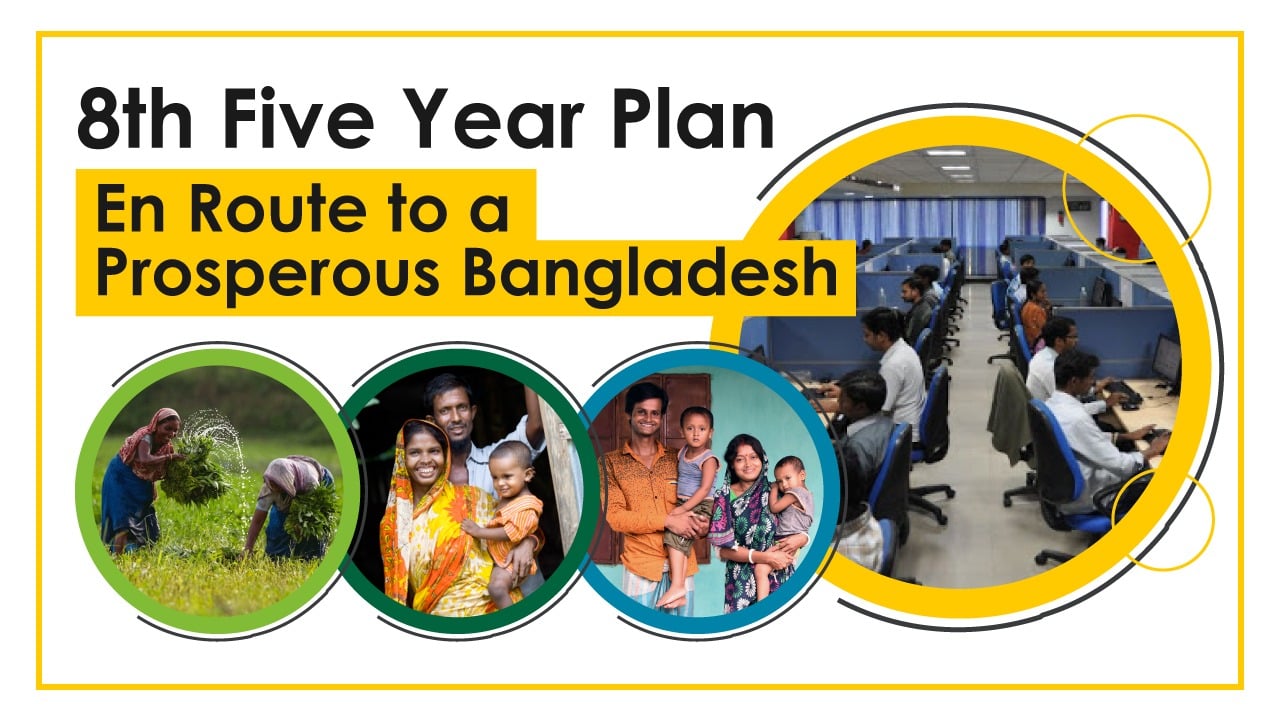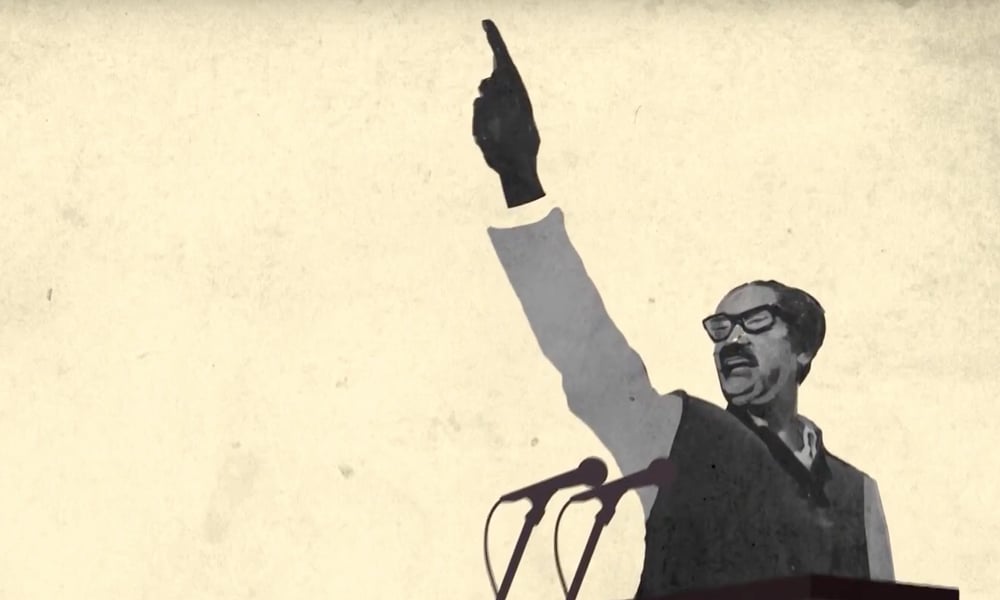3433
Published on January 20, 2023Hiren Pandit:
Bangabandhu Sheikh Mujibur Rahman, the greatest son of the soil and greatest Bengali for thousands of years, the great hero of history and the father of the nation, has made the dream of Bengal a reality and given the people an independent state. Inspired by this hypnotic speech of 7 March 1971 at Racecourse ground, the Bengali nation started taking preparation for starting a liberation war with weapons and independence was attained through the 9 months of the war in sacrifice for the fresh blood of 3 million martyrs, a disgrace to two lakh mothers and sisters and boundless sacrifice.
Bangabandhu landed in the country on 10 January 1972 and mentioned just after his arrival that “the freedom will not be fruitful if the people of Bengal do not eat rice on a full stomach, this freedom will not be fulfilled for me if the mothers and sisters of Bengal do not get clothes, the freedom will not be fulfilled for me if the people of this country, who are my youths, do not get jobs”.
On 12 January Bangabandhu took over as the Prime Minister and began the task of rebuilding the war-torn country. Only three and a half years later, on 15 August 1975, when he was brutally assassinated, the development of the country came to a standstill again.
Tireless Efforts for transforming Bangladesh from a bottomless basket into a developed country
Bangabandhu's daughters Sheikh Hasina and Sheikh Rehana survived the barbaric assassination on 15 August 1975 as they were abroad. After a long 6-year exile, Sheikh Hasina came to the country in 1981 with the responsibility of the Awami League. She turned mourning into power and jumped into realizing the economic and political rights of the people of the country. She won the election in 1996 and formed the government and adopted the Fifth Five-Year Plan (1996-2001).
Taking over as Prime Minister for the second time on January 8, 2009, she worked tirelessly to implement the Sixth Five-Year Plan, the MDGs and the First Perspective Plan. She was re-elected in the February 5, 2014 elections and got a chance to take the country forward by forming the government. The Prime Minister took 10 special initiatives. Prioritizes poverty, hunger-free society, housing, education, medicine, employment, social safety net and digitization in the country.
The shelter project has provided shelter to more than 4 lac families till now. On the Mujib birth centenary, she has given 171,189 families a single home as a gift of the year. About 14,500 community clinics are at people's doorsteps to provide health care. Provides scholarships and stipends to more than 3 crore students, various allowances to 6 lakh people, rice worth taka 10 lahks to 50 lakh families, subsidy to farmers in the agricultural sector, and announces various incentive packages of taka 1,21,000 crore in the country's economy during the Covid-19 pandemic have been playing a significant role in poverty alleviation.
Now Bangladesh is the third-largest producer of rice in the world and is also self-sufficient in fish, meat, eggs and vegetables. Bangladesh ranks second in terms of the growth rate of fish production in inland open water and Bangladesh ranks first among 11 Hilsa-producing countries. Today, the benefits of 'Digital Bangladesh' have spread from urban to villages.
Bangladesh has achieved many unprecedented successes. Our beloved motherland is moving forward by overcoming various obstacles. Sheikh Hasina has taken up several mega projects. The Padma Multipurpose Bridge has started in June last year. This has revolutionized communication with the South part of Bangladesh. Bangabandhu Satellite-1 contributes to boosting the country's economy by providing all citizens with a wide range of telecommunications services (direct-to-home TV, radio, telemedicine, education and internet access), Rooppur Nuclear Power Plant, Dhaka Metrorail Project, Materbari Deep Seaport Construction Project, Rampal Coal Based Power Project, Bangabandhu Tunnel Construction Project, work of 100 economic zones is in progress, elevated expressway, 39 high-tech parks and IT villages are being built. The eighth Five Year Plan has been adopted. The villages are equipped with all civic amenities. Today we have become a country with self-respect in the world holding our heads high.
The World Economic Forum considered that Bangladesh will be the 24th largest economy in the world by 2030. According to the second perspective plan, in 2031, there will be no one to call Bangladesh extremely poor. Bangladesh moves to developing countries. Per-capita income is now 2824 and human resources and economic fragility— the criteria for these three indicators determine the eligibility of developing countries to be listed. Bangladesh has achieved the desired qualifications in these three indices. Women are now contributing at all levels including social, political, and economic. Women in rural areas are not lagging in the touch of technology. They are also moving forward in parallel. Which has brightened the image of Bangladesh in the world. Bangladesh is moving forward on the path of building a golden Bengal. The young generation is the leader of the future state. To turn the young generation into human resources, Science, Technology, Engineering, Arts and Mathematics (STEAM) education is being introduced for career-oriented education. The state must give due value to the knowledge, skills, experience, desires and opinions of the youth.
Sheikh Hasina has given 4 milestones, the first is the vision of Digital Bangladesh in 2021 which is being achieved to a great extent, the second is to achieve the SDGs in 2030, the third is to build a developed Bangladesh in 2041 and the fourth is the Delta Plan for 2100.
Attempts are being made to make it a reality Education, communication infrastructure, gas, electricity, women's education, 100% increase in salaries and allowances of employees, healthcare, distribution of free books, self-sufficiency in food production, social safety net support to the socially disadvantaged people, helpless, elderly, widows, persons with disabilities, divorced, autism, the benefits of assisting the poverty-stricken freedom fighters, shelter project, one house one farm project, women empowerment, universal pension scheme and overall development of various sectors. All citizens are working for a developed Bangladesh, free from hunger and poverty (achieving SDG-1 Ending Poverty and SDG-2, Zero Hunger) and upholding the spirit of liberation war and secularism which the Father of the Nation Bangabandhu Sheikh Mujibur Rahman dreamt of.
Vision 2041 or Bangladesh Vision 2041 is a national strategic plan given by Prime Minister Sheikh Hasina and formulated by the National Economic Council to further strengthen the socio-economic position of the People of Bangladesh.
Vision 2041: Bangladesh will change
By 2041, Bangladesh will be a developed country, with a per capita income of more than, 12,500. Bangladesh will be a golden Bengal, where poverty will be a thing of the past. The next two decades will see changes in the way agriculture, industry and commerce, education and health, transportation and communications, business practices and performance patterns are achieved. The benefits of this continuous change have been emphasized in the Vision of balanced distribution at all levels of society.
Towards a High-Income Economy, the dream cherished by the Father of the Nation to build a prosperous Bangladesh free from poverty and hunger, free from corruption and exploitation has been taken as an inspiring start. To achieve this goal, it has set a target of 9.02 percent growth in the gross domestic product (GDP) over the next two decades. Following this path of growth, Bangladesh 2031 will be an upper-middle-income country.
The potential population of Bangladesh in 2041 will be 213 million. Those with a per capita income of at least 12,500. Extremely poor people with a daily income of less than 2.18 will be reduced to 0.6 percent. The poorest people, who have a daily income of 3.20, will have 2.59 percent. Making the seemingly impossible possible. To this end, strategic work has been committed for export-oriented industrialization, increase in agricultural productivity, expansion of the city, efficient energy and infrastructure, creation of skilled manpower, etc.
The four pillars of good governance, democratization, decentralization and capacity building will be the main agenda to achieve Vision 2041. Improving the quality of political institutions is seen as a major challenge. Vision 2041 has expressed the conviction to build a similar financial institution. The judiciary has been told to carry out its responsibilities independently, honestly and efficiently. Only then can good governance and non-discriminatory development be achieved in the country.
Digital technology-based revenue administration will be built to increase it to 50 percent by 2041. In 2041, the amount of investment will be 48.6 percent of GDP, which is currently 32.6 percent. Export revenue should be increased from the desired 50 billion dollars in 2021 to 300 billion dollars in 2041.
Vision 2041 expresses the conviction to build a poverty-free country by 2041. No one Leave Behind, this principle of SDGs has been adopted as an inspiration. The labor market of the future will be skill-dependent. Therefore, to ensure the access poor to the rapidly changing labor market, they need to be trained as skilled manpower. To reduce income inequality in society, one of the tasks of the government of the day will be to develop the credit market for the poor, ensure equitable distribution of resources, and increase the social safety net.
In developed countries, the contribution of the service sector to GDP is 60-70 percent. In the fiscal year, the contribution of the service sector to the GDP of Bangladesh was only 51.62 percent. On the way to development, our economy will be transformed from agriculture to industry. This will require the integrated implementation of interrelated trade and industrial policy. To this end Industrialization, Export Diversification and Employment in a Future World System, promises to eliminate infrastructural barriers, improve the efficiency of the workforce, conduct research on innovation at all stages of production, improve the business environment and ensure financing through Public Private Partnership (PPP).
Significant success has been achieved in the power and energy sectors. The production of 5623 MW in 2010 has increased to 16,981 MW in 2020. The demand for electricity and fuel will continue to increase in the coming days. In 2041, the demand for electricity in Bangladesh will be 51,000 MW. Bangladesh will be able to generate 56,634 MW of electricity that year as per the target entitled Sustainable Power and Energy for a High-Income Country. At this time, nuclear technology will be added to the power sector. In 2041, the fuel format will be 35 percent gas, 35 percent coal, 12 percent nuclear, 1 percent liquid oil and 1 percent water. The remaining 18 percent must be imported.
At the 29th General Assembly of the United Nations in 1974, the Father of the Nation spoke of the "extraordinary achievements of science and technology." 'Digital Bangladesh' has been achieved through the hands of the Prime Minister. Following this, a plan has been taken to create an innovative economy for Bangladesh by nurturing ICT and scientific research by 2041. It has been promised to increase the current ‘Citizen ICT Accessibility’ score from 35.6 to 65 by 2041 to become the 20th in the world.
Connection of Metrorail in an urban communication system, upgrading the current average speed of highway corridor from 25-30 km/h to 60-100 km/h, upgrading of all railway lines to broad gauge system and installation of modern traffic signals, ship's 'anchor day' and Steps will be taken for the next two decades to improve navigability through development, dredging, river management and dam construction, installation of additional runways and taxiways at airports and periodic collection of tolls from highway users.
Urbanization and development are very deeply and positively related. Due to high economic density, urban areas are the driving force of growth. Like developed countries, in 2041, 80 percent of the total population of Bangladesh will live in cities. Preparations for this are described entitled Measures of Urban Variability in a High-Income Economy. The government has taken a plan to expand all the facilities of the city to the rural areas under the policy 'My Village My Town'. Instead of Dhaka-centric urbanization, emphasis has been laid on the balanced development of many urban centers. The public-private investment will be increased for the development of air quality, public transport, traffic, sewerage and the drainage system of the city.
Ensuring Sustainable Environmental Development and Building a Climate-Sustainable Nation and Unleashing the Possibilities of a Green Economy in a Dynamic Vibrant Delta, sets out on climate adaptation efforts. Tidal fluctuations, salinity, floods, river erosion and tidal surges are regular features of Bangladesh, which hinder development. Under the Delta Plan 2100, the current plan focuses on the extraction of Blue economic resources (fisheries, seaweed, mineral resources).
The Government's development vision, objectives and goals for achieving a prosperous Bangladesh by 2041 and a roadmap for its implementation. Following the path of this path design, the Golden Bengal of Dreams of the Father of the Nation will be achieved in 2041.
2041's 'Smart Bangladesh' look like
We are currently witnessing an incredible systematic fundamental change (paradigm shift). This change is taking place along the path of the digital transformation of the conventional system. With the advent of sophisticated technology, digital transformation is taking place at a rapid pace. In the fourth industrial revolution, you can see that it is being printed from your 3D printer and brought to the fore. While there will be challenges to this fundamental change in the system, it will not necessarily pose a threat to those countries that will use state-of-the-art technology and improve efficiency in digital transformation.
Who will implement well-planned activities, policies and strategies to harness the unprecedented opportunities and economic potential created by the Fourth Industrial Revolution? In this case, our positive side is the success in building a digital Bangladesh, the main motivation of the most inspiring 'Vision 2021' in the political history of the country. Digital Bangladesh is providing strength, courage and motivation to meet the challenges and exploit the potential of the Fourth Industrial Revolution. So it appears that advanced or sophisticated technologies, such as artificial intelligence and the Internet of Things, have already begun to contribute to the rapid development of the economy.
The ambitious 'Smart Bangladesh 2041' concept has been formulated with an emphasis on its extensive use. How will the smart Bangladesh of 2041? Critics might say the plan is too ambitious. Whether in personal life or the management of the state; If there is no ambition to achieve any goal, it will be floating in the river like a boat without a sailor. The implementation of such an ambitious modern program will be 'impossible' or 'difficult' after the announcement of Digital Bangladesh 14 years ago; Many such words were heard. Criticism of Digital Bangladesh was also strong from the ruling party's political opponents. But overcoming all criticism, Digital Bangladesh is now a reality. One thing has come to the fore from this success. No matter how ambitious the program taken for the welfare of the country and the people; A good dividend can be obtained if the goal is set and the implementation is sincere.
In implementing Digital Bangladesh, we have got a new sector called Digital Economy. We have witnessed the launch of the Bangabandhu satellite in space. The implementation of the 'Smart Bangladesh 2041' vision may see another sector called the space economy. Home-made satellites are being sent into space. With such ambition, Smart Bangladesh 2041 is not just a vision; The previously announced 'Vision 2041' also emphasizes building a space economy. The plan to build a space economy has to be applauded for two reasons. First, given the current global realities, Bangladesh will have to launch more different types of satellites into space for space research and expansion of the economy and information technology. Second, investing in satellites is profitable. According to a UK study entitled 'Satellite Communications: Impact on Developing Economies', it is possible to earn 45 at the expense of 1 from the state treasury.
The analysis shows that the 'Smart Bangladesh 2041' has been formulated to accelerate the achievement of 'Vision 2041'. There are two main objectives based on Vision 2041. First, by 2041, Bangladesh will be a developed country, with a per capita income of 12,500 at current prices, which would be consistent with the digital world. Second, Bangladesh will be a golden Bengal, where poverty will be a thing of the distant past. The state-of-the-art technology is being utilized in the form of 'Smart Bangladesh 2041' to assist in achieving this goal of the perspective plan. This is because the use of sophisticated technology in the fourth industrial revolution will lead to faster economic development in the world than in the previous three industrial revolutions. The government wants to ensure that the contribution of the ICT sector to the national economic growth is more than 20 percent by 2041 by making extensive use of these technologies.
According to the World Economic Forum (WEF), energy, transportation, health, communications and digital production - are the five main areas that will be managed efficiently. Notably, in the concept of 'Smart Bangladesh 2041', it has been proposed to manage more areas efficiently. Under it, sectors like agriculture, education, healthcare, trade, transport, environment, energy and resources, infrastructure, trade, governance, financial transactions, supply chain, security, entrepreneurship, and community will be driven by technology and each sector will be smart. Such as smart agriculture, smart education etc.
Three important aspects of the Smart Bangladesh vision- are a knowledge-based economy, an innovative nation and building an inclusive digital society. There are proposals for its deliberate implementation. The construction of the national knowledge shuffle required for the technology of the Fourth Industrial Revolution; Building infrastructure for conducting knowledge-based activities; Establishment of international startup mentors and business coaches at the local level and the establishment of an Alternative School for Startup Educators of Tomorrow and Center for Learning Innovation and Creation of Knowledge.
In building an innovative nation, emphasis has been placed on capacity building, quality innovation and control. It is proposed to set up Self Employment and Entrepreneurship Development (SED) and Content Engineering and Linkage Lab (Cell) as new initiatives to create entrepreneurs. In building an inclusive digital society, emphasis has been placed on ensuring the inclusion and empowerment of people from all walks of life. The ICT department has already taken various initiatives to implement the Smart Bangladesh vision.
One of these is the establishment of the Center for Fourth Industrial Revolution and Digital Leadership Academy under the BCC's Enhancing Digital Government and Economy project and the creation of skilled human resources for the Fourth Industrial Revolution. The question is, will building a smart Bangladesh be successful at all? Presumably, the more we talk about smart Bangladesh; Such a question will arise in many. But we don't think there is any reason to be pessimistic about it. Bangladesh has stepped into the digital era this year and is poised for LDC graduation by 2026 and planning to achieve the SDGs by 2030. However, the country's ultimate mission is to become a poverty-free, equitable, high-income country by 2041.
Writer: Researcher and a columnist
Courtesy: dailyasianage.com














